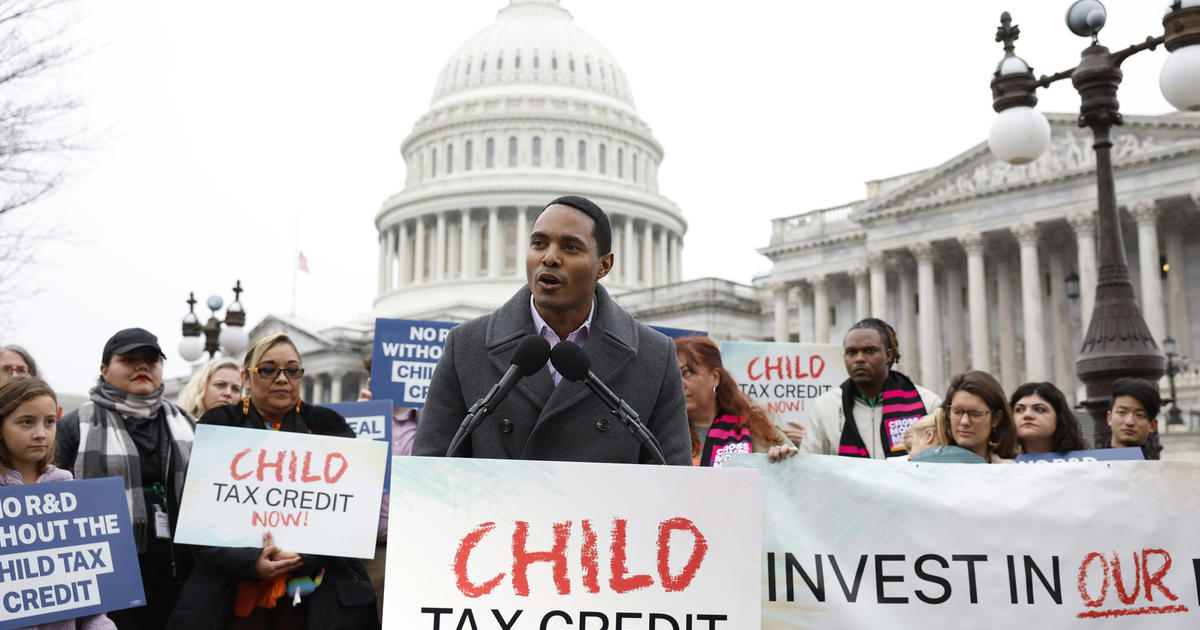Child Tax Credit: Why Are Some Parents Having Problems?
(CBS Detroit) -- The second round of advance Child Tax Credit payments went out August 13. The Treasury Department and Internal Revenue Service (IRS) announced this morning that over $15.4 billion was sent to the families of almost 61 million children. Those with banking information on file with the Internal Revenue Service (IRS) started receiving their deposits that same morning. But some people are wondering why their payment did not come today. Still others may get an amount that differs from what they feel they are owed. Here's how the updated credit works, along with a few reasons why payments could be delayed, inaccurate, or come in a different form.
How Does The Advance Child Tax Credit Work?
The IRS is paying $3,600 total per child to parents of children up to five years of age. That drops to $3,000 for each child ages six through 17. Half of the total is being paid as six monthly payments and half as a 2021 tax credit. The IRS has also made a one-time payment of $500 for dependents age 18 or full-time college students up through age 24.
The updated Child Tax Credit is based on parents' modified adjusted gross income (AGI), as reflected on their 2020 tax filing. (AGI is the sum of one's wages, interest, dividends, alimony, retirement distributions and other sources of income minus certain deductions, such as student loan interest, alimony payments and retirement contributions.) The amount phases out at a rate of $50 for every $1,000 of annual income beyond $75,000 for an individual and beyond $150,000 for a married couple. The benefit is fully refundable, meaning it does not depend on the recipient's current tax burden. Qualifying families receive the full amount, regardless of what they owe in taxes. There is no limit to the number of dependents that can be claimed.
For example, suppose a married couple has a three-year-old child and a seven-year-old child and showed an annual joint income of $120,000 on their 2020 taxes. The IRS is sending them $550 per month. That's $300 per month ($3,600 / 12) for the younger child and $250 per month ($3,000 / 12) for the older child. Those payments will last through December. The couple would then receive the $3,300 balance -- $1,800 ($300 X 6) for the younger child and $1,500 ($250 X 6) for the older child -- as part of their 2021 tax refund.
Why Didn't I Get What I Thought I Would?
For a program of this scale, some issues are inevitable. Most issues revolve around seemingly missing or inaccurate payments. Public outreach about the updated Child Tax Credit was fairly limited, falling largely to private organizations. A Data For Progress study found that about half of eligible adults weren't even aware of the program in the weeks leading up to the start date. So some confusion lingered after the first check. Here are some questions to consider:
How old will your child be at the end of 2021?
Parents of a child who ages out of an age bracket this year are paid the lesser amount. That means if a five-year-old turns six in on or before December 31, 2021, the parents will receive a total Child Tax Credit of $3,000 for the year, not $3,600. That translates to $250 per month, not $300 per month. Likewise, if a 17-year-old turns 18 in 2021, the parents should have received a one-time payment of $500, not monthly payments of $250 that add up to $3,000.
How much did I earn in 2020?
To determine the correct amount of a credit, the IRS is using the AGI from the most recent tax filing it has. For most people, that is the 2020 tax year. The IRS then looks to a taxpayer's 2019 filing. Without tax information from either of those years, the IRS does not issue an advance credit. That is, unless a parent signed up for a stimulus or submitted their information through the Child Tax Credit Non-Filer Sign-Up Tool. Single parents who earned below $75,000 and married couples who earned below $150,000 should receive the full credit, based on their child's age. Those who earned more than those amounts will receive $50 less of the credit for every $1,000 more of income.
When did I file my taxes, and were they processed?
For the first payment of the updated Child Tax Credit, the IRS used tax information submitted -- and processed -- by June 28, 2021. However, according to a report from National Taxpayer Advocate Erin Collins, released June 30, over 35 million tax returns (roughly two-thirds of which were refunds) remained unprocessed or in one of the various stages of processing. So many people who filed their taxes by the May 17 federal deadline still had their credit determined by their 2019 tax filing. The same is likely true for the second round of payments. The backlog of tax returns has since grown smaller, but it's still sizeable. If you've not received the 2020 refund you're due, your taxes may still be awaiting processing.
How have I received recent tax refunds and stimulus checks?
Child Tax Credit payments made via direct deposit are already arriving. Mailed checks can take quite a bit longer, given the vagaries of the U.S. Postal Service. Those who received a recent tax refund or stimulus check by direct deposit can expect this credit to arrive the same way. If the IRS has outdated bank account information, or the account is inactive, the agency will revert to mailing a physical check. Mailed checks can take up to four weeks to arrive.
The IRS announced a technical issue that could affect up to 15 percent of recipients of the Child Tax Credit. A group of parents who received their July payment via direct deposit will receive their August payment as a physical check. The agency expects to resolve the matter before the September payment.
Is my payment missing?
After answering the previous questions, it may still seem like a Child Tax Credit payment should have arrived. A parent can ask the IRS to trace the payment by submitting a Taxpayer Statement Regarding Refund (Form 3911). Those expecting direct deposit should wait five days after the official pay date to request a trace. Those expecting a mailed check should wait four weeks to request a trace.
What Tools Does The IRS Have?
The IRS has three different tools to help recipients of the updated Child Tax Credit register, check their eligibility and even change their bank account information. Let's review what these tools can do.
Child Tax Credit Update Portal
The Child Tax Credit Update Portal allows users to make sure they are registered to receive advance payments. It also lets recipients see their payment history and unenroll from advance payments in favor of a one-time credit when filing their 2021 taxes. The next deadline for opting out of monthly payments is August 30. (Subsequent opt-out deadlines for future payments will occur three days before the first Thursday of the month from which a person is opting out.)
Here are the remaining opt-out deadlines:
- Payment Date: September 15 / Opt-Out Deadline: August 30
- Payment Date: October 15 / Opt-Out Deadline: October 4
- Payment Date: November 15 / Opt-Out Deadline: November 1
- Payment Date: December 15 / Opt-Out Deadline: November 29
The tool now also allows users to add or modify bank account information for direct deposit. Other features coming to the portal include updating income, marital status, and dependent info. To access this portal, users need an IRS username or an ID.me account. ID.me is a sign-in service used by various government agencies, including the IRS, Social Security Administration and Treasury Department, to authenticate users. Users need valid photo identification to create an account.
Child Tax Credit Non-Filer Sign-Up Tool
The Child Tax Credit Non-Filer Sign-Up Tool is to help parents of children born before 2021 who don't typically file taxes but qualify for advance Child Tax Credit payments. That means parents who have not filed their 2020 taxes, are not required to file, and don't plan to file. (Parents who claimed their dependents on their 2019 tax return should not use this tool.)
Users enter their personal information, including their name, mailing address, email address, date of birth, relevant social security numbers, bank account information, and identity protection PIN. The IRS uses the information to check eligibility and, once confirmed, will begin making payments. The IRS and experts advise using the tool on a desktop or laptop computer rather than a mobile device.
As part of the government's effort to boost enrollment, it also just announced the pending launch of a bilingual sign-up tool that's mobile friendly. A multi-lingual and mobile-friendly site are in the government's long-term plans as well.
Child Tax Credit Eligibility Assistant
The Child Tax Credit Eligibility Assistant lets parents check if they are eligible to receive advance Child Tax Credit payments. Users will need a copy of their 2020 tax return or, barring that, their 2019 tax return. It's also fine to estimate income and expenses from the appropriate tax year, though the result may not be accurate. The assistant asks multiple questions to determine eligibility, but does not ask for sensitive information. No entries are recorded.


